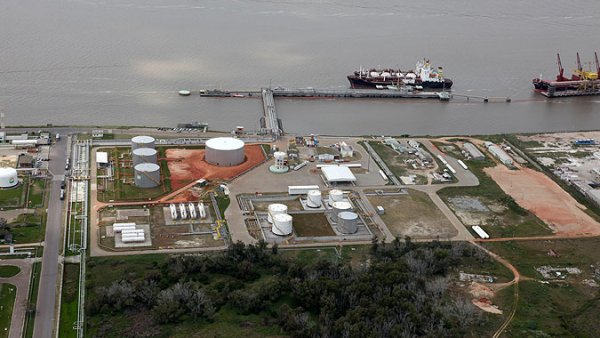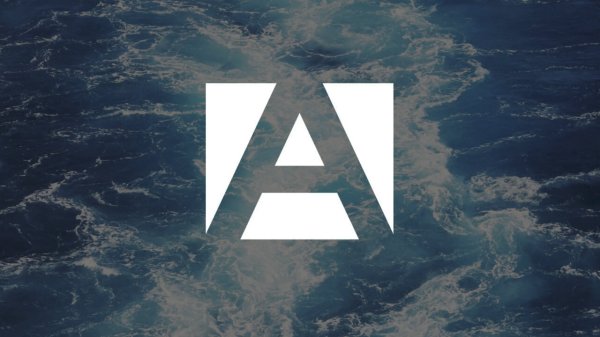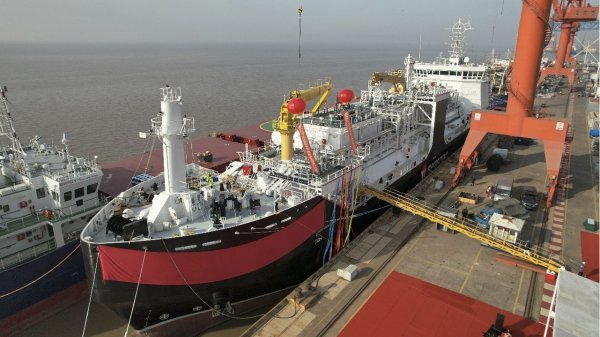EEDI discussed at Ship Efficiency Conference
Event participants discuss pros and cons of Energy Efficiency Design Index.
The 2nd International Conference on Ship Efficiency left its more than 200 participants wondering whether the current proposal to implement an Energy Efficiency Design Index (EEDI) is the most appropriate tool to cut ship emissions.
Professor Stefan Krueger of TU Hamburg Harburg, Institute of Ship Design and Ship Safety, discussed the pros and cons of the EEDI currently debated within the IMO working groups.
Professor Krueger explained the motivation for EEDI, which is the current IMO response to the increasing CO2 output from shipping. He pointed out that the EEDI philosophy had serious drawbacks and would undermine technical progress. Possibilities of optimizing the ship design would be extremely limited, he said.
He reminded the audience from 24 countries - many of them representing shipping companies - that the CO2 output is proportional to fuel consumption. All measures to decrease fuel consumption also decrease the CO2 footprint. His pragmatic solution for improving ship efficiency and reducing the CO2 problem was adjusting the fuel price accordingly. IMO, however, opted for an EEDI, which expresses the impact to the environment from shipping versus the benefit to the society.
Professor Krueger made reference to the baseline definition, which depends solely on the deadweight of the ship and the ship type. This leads to ships being "efficient" when they are big and slow. To make the Index work, Professor Krueger suggested to replace deadweight with payload and to improve the baseline concept by taking into account physical principles. Otherwise, there would be no encouragement for designers to develop more efficient designs resulting in significant reductions of fuel consumption.
Commenting on the conference, event organizer The German Society for Maritime Technology (SGT) said it had fulfilled its ambition to provide a forum where maritime stakeholders can exchange ideas on all issues related to the efficient operation of ships including design aspects and future fuels and efficient power. Altogether 17 presentations showed the wide range of complex technical possibilities to increase a ship's efficiency and to improve measures to protect the environment.
The conference ended with the conclusion that there is no contradiction between economy and environmental issues. New ships can be designed efficiently and at the same time be environmentally friendly.
Different approaches were presented on how to evaluate and to select technical retrofit options, whilst case studies showed that investments carried out on existing vessels can be amortised in few years. As an alternative to heavy fuel oil, the gas-fuelled operation of ships was also discussed as being a real option for the future.
The next STG Conference on Ship Efficiency will take place in 2011.
Professor Stefan Krueger of TU Hamburg Harburg, Institute of Ship Design and Ship Safety, discussed the pros and cons of the EEDI currently debated within the IMO working groups.
Professor Krueger explained the motivation for EEDI, which is the current IMO response to the increasing CO2 output from shipping. He pointed out that the EEDI philosophy had serious drawbacks and would undermine technical progress. Possibilities of optimizing the ship design would be extremely limited, he said.
He reminded the audience from 24 countries - many of them representing shipping companies - that the CO2 output is proportional to fuel consumption. All measures to decrease fuel consumption also decrease the CO2 footprint. His pragmatic solution for improving ship efficiency and reducing the CO2 problem was adjusting the fuel price accordingly. IMO, however, opted for an EEDI, which expresses the impact to the environment from shipping versus the benefit to the society.
Professor Krueger made reference to the baseline definition, which depends solely on the deadweight of the ship and the ship type. This leads to ships being "efficient" when they are big and slow. To make the Index work, Professor Krueger suggested to replace deadweight with payload and to improve the baseline concept by taking into account physical principles. Otherwise, there would be no encouragement for designers to develop more efficient designs resulting in significant reductions of fuel consumption.
Commenting on the conference, event organizer The German Society for Maritime Technology (SGT) said it had fulfilled its ambition to provide a forum where maritime stakeholders can exchange ideas on all issues related to the efficient operation of ships including design aspects and future fuels and efficient power. Altogether 17 presentations showed the wide range of complex technical possibilities to increase a ship's efficiency and to improve measures to protect the environment.
The conference ended with the conclusion that there is no contradiction between economy and environmental issues. New ships can be designed efficiently and at the same time be environmentally friendly.
Different approaches were presented on how to evaluate and to select technical retrofit options, whilst case studies showed that investments carried out on existing vessels can be amortised in few years. As an alternative to heavy fuel oil, the gas-fuelled operation of ships was also discussed as being a real option for the future.
The next STG Conference on Ship Efficiency will take place in 2011.

|
IMO approves pricing mechanism based on GHG intensity thresholds
Charges to be levied on ships that do not meet yearly GHG fuel intensity reduction targets. |
|
|
|
||

|
VARO Energy expands renewable portfolio with Preem acquisition
All-cash transaction expected to complete in the latter half of 2025. |
|
|
|
||

|
NYK trials biofuel in milestone coal carrier test
Vessel is used to test biofuel for domestic utility company. |
|
|
|
||

|
H-Line Shipping orders LNG bunkering vessel
Vessel with 18,000-cbm capacity to run on both LNG and MDO. |
|
|
|
||

|
How to engineer and manage green shipping fuels | Stanley George, VPS
Effective management strategies and insights for evolving fuel use. |
|
|
|
||

|
Swedish government bans scrubber wastewater discharges
Discharges from open-loop scrubbers to be prohibited in Swedish waters from July 2025. |
|
|
|
||

|
MAN Energy Solutions achieves 100% load milestone for ammonia engine
Latest tests validate fuel injection system throughout the entire load curve. |
|
|
|
||

|
Petrobras secures ISCC EU RED certification for B24 biofuel blend at Rio Grande
Blend consisting of 24% FAME is said to have been rigorously tested to meet international standards. |
|
|
|
||

|
Stolt-Nielsen to fully control Avenir LNG with acquisition
Share purchase agreement to buy all shares from Golar LNG and Aequitas. |
|
|
|
||

|
Bureau Veritas supports launch of CIMC SOE's LNG bunkering vessel
Handover of Seaspan Energy's cutting-edge 7,600-cbm vessel completed. |
|
|
|
||
Related Links
- · World Maritime Day focuses on GHG issue [Insights]
- · Merkel to attend GMEC green shipping summit [Insights]
- · Germany [Directory]
- · Hamburg [Directory]

